 When you think of Colonial Williamsburg interior design, what paint color comes to mind? Did you think “Williamsburg Blue”? Many people do, and we’re out to spread the word that 18th-century buildings used a much bolder and varied color palette than people once knew.
When you think of Colonial Williamsburg interior design, what paint color comes to mind? Did you think “Williamsburg Blue”? Many people do, and we’re out to spread the word that 18th-century buildings used a much bolder and varied color palette than people once knew.
On a warm and sunny weekend in early October, staff from the WILLIAMSBURG Brand product licensing team and executives from Benjamin Moore hosted a group of style bloggers (Emily A. Clark, Cheryl Sousan, Lindsay Souza, Erin Souder, and Dagmar Bleasdale) for a behind-the-scenes look at just some of the design inspiration behind our Benjamin Moore WILLIAMSBURG Color Collection. We discovered how paint colors and wall coverings in the Historic Area are chosen, and we saw firsthand how the buildings of the Revolutionary City have influenced the colors included in the WILLIAMSBURG palette.
Our #ColorsofWilliamsburg weekend focused on paint, but along the way we learned tidbits about history, architectural preservation, and paint analysis.
Our first stop was WILLIAMSBURG At Home, the flagship store of the Foundation’s products division. Benjamin Moore is one of many licensees who carry on our legacy of being the world’s oldest museum licensing program. Licensed products available at WILLIAMSBURG At Home make quite a style statement about how “Trend Meets Tradition” with our current offerings in home décor.
Can you spy the 18-the century influence behind this stunning mirror? Lindsay Souza captured it on Instagram during our tour of the Governor’s Palace.
On Saturday, we toured the Historic Area with Matthew Webster, Director of Architectural Preservation, and Kirsten Travers Moffitt, Associate Curator and Materials Analyst. Matt started us off by explaining how paint colors were status symbols during the colonial era.
“If a Ferrari pulls up in front of my house, I know the person is wealthy, and likely lost,” joked Matt. “Two people with Ferraris understand the details of each car and look at them to determine who has the better or more expensive vehicle. This is essentially how it worked with 18th-century gentry homes.” A bright, gold paint would have been much more fashionable and expensive in the late 1700s than a reddish brown, for example.
Inside each building we toured, Matt and Kirsten explained the detailed, meticulous techniques that have been used to determine historically accurate color palettes, both inside and outside the buildings.
We ran into one unexpected problem on our tour: drained cell-phone batteries! There was so much design inspiration in every room. What stories were the bloggers planning when they snapped these pictures? We loved reading their blogs to find out. Dagmar blogs about the status of paint color. Emily was surprised to find so much pattern and color in the Wythe House. Erin compares the wall coverings to original archeological fragments and shows the corresponding paint colors they’ve inspired.
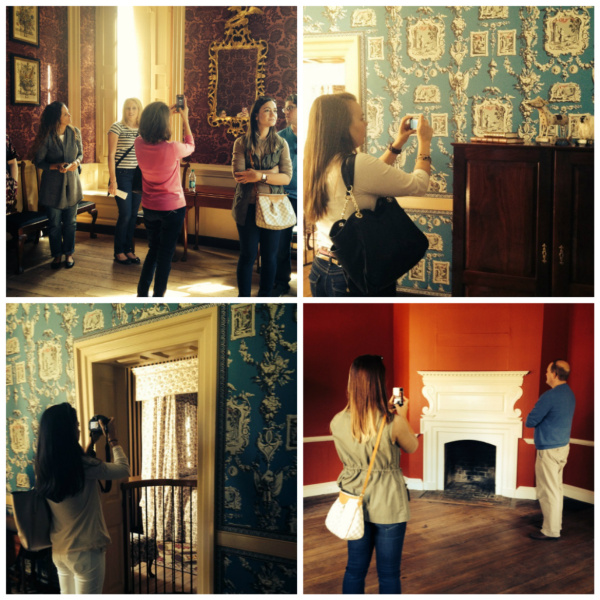
From top left to right, Emily A. Clark in the dining room of the Wythe House, Dagmar Bleasdale and Lindsay Souza upstairs in the Wythe House, and Erin Souders in the Robert Carter House.
After tours through Historic Area buildings, we headed to Colonial Williamsburg’s newly opened Materials Conservation Research Lab. Here, Kirsten demonstrated the range of technologies she can use to determine the true color of even the tiniest fragments of paint, wood, or wallpaper. The lab’s analytical equipment includes a handheld x-ray spectrometer, an infrared micro-spectrometer, and a fluorescence microscope. If layers of paint have been added to a staircase, for example, she can discover and authenticate the unique color of each layer–essentially peeling back time to peek at the colors of the past.
What we know today, the result of cutting-edge technologies and exhaustive research by experts like Matt and Kirsten is that the Revolutionary City was a vibrant place–not just alive with political discourse and cultural exchange, but literally vibrant and colorful. What historians once believed were the dim, subdued colors of the past were actually aged, weathered fragments diminished by layers of dirt and exposure to sunlight.
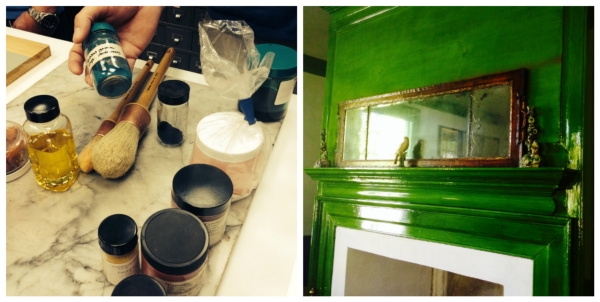
Left: Matt shows verdigris green in its raw form, derived from careful research. Right: Varnished verdigris painted on a mantle inside the Thomas Everard House. The varnish made the paint extremely expensive, so both color and finish were symbols of wealth.
Clearing away debris and misconceptions began as a way to create a historically accurate experience for Colonial Williamsburg guests. In the process, our historians discovered design trends that are still relevant today. We’re seeing a much brighter picture of 18th-century décor and style than we ever have before. The resulting collaboration between our licensing team and Benjamin Moore means anyone can have access to the 144 rich, authentic WILLIAMSBURG hues worthy of that bearing that name.
Guest Post by Kimberly Richards-Thomas
Kimberly Richards-Thomas, a public relations professional with ten years of experience in higher education communications, recently joined the WILLIAMSBURG brand. Her responsibilities include managing public relations with more than 30 licensees, growing WILLIAMSBURG brand social media presence, and writing copy for products available in the Historic Area, at nationwide retailers, and online at www.WilliamsburgMarketplace.com.
Because our products are inspired by Colonial Williamsburg history or by 18th-century art held in our museum archives, Kimberly researches the inspiration behind each piece to tell its story–and our story–to the public. In this way, her writing supports the educational mission of the Foundation while also showing how “Trend Meets Tradition” with our latest WILLIAMSBURG product introductions.
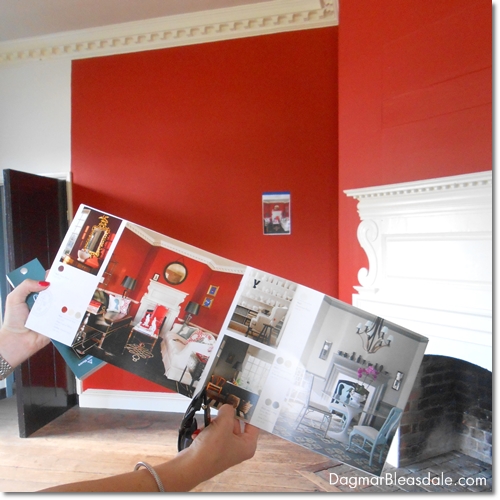


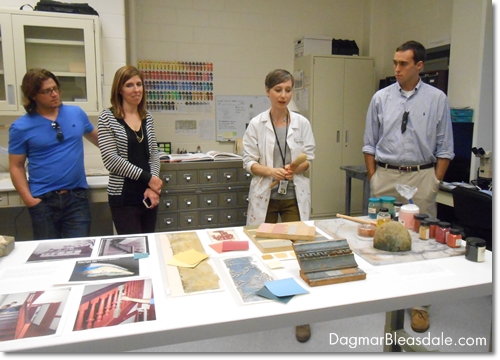

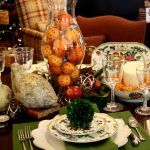
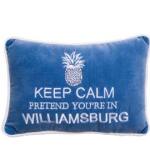

This post is helpful and I have shared it on my website….Thank you.
Thanks, Gerst! We appreciate the support.